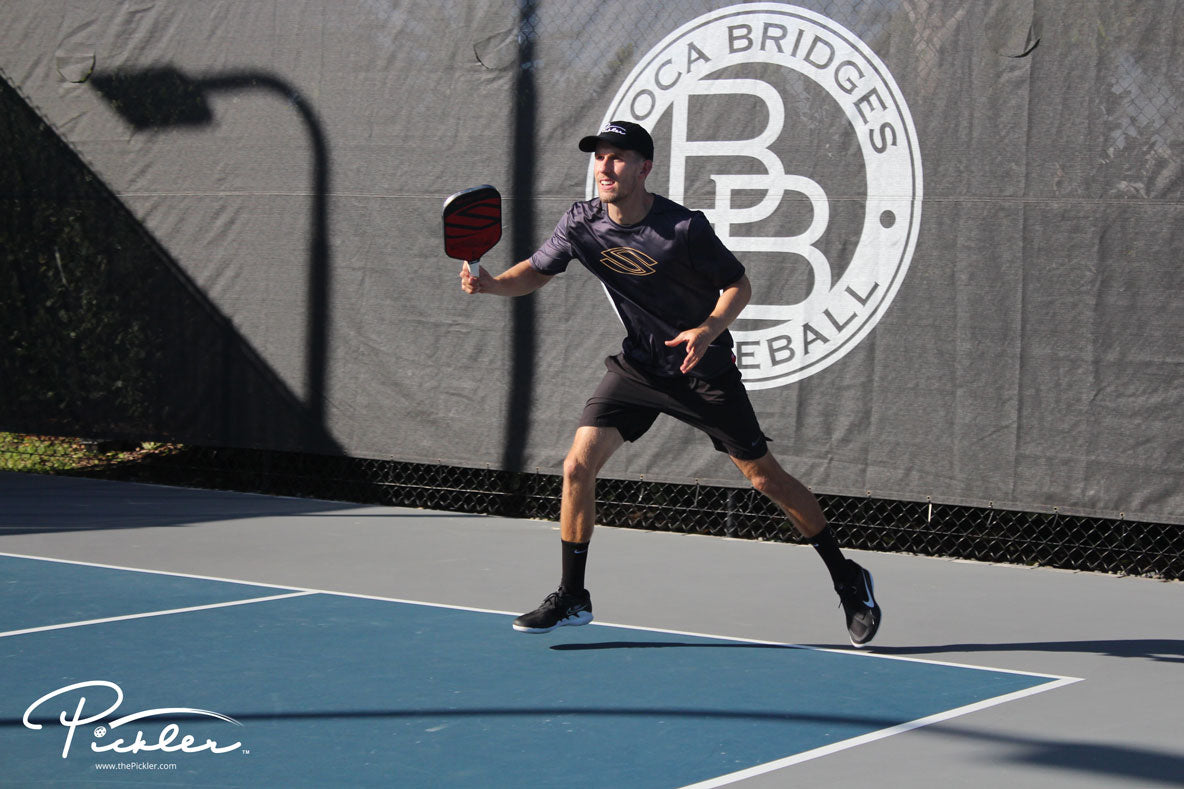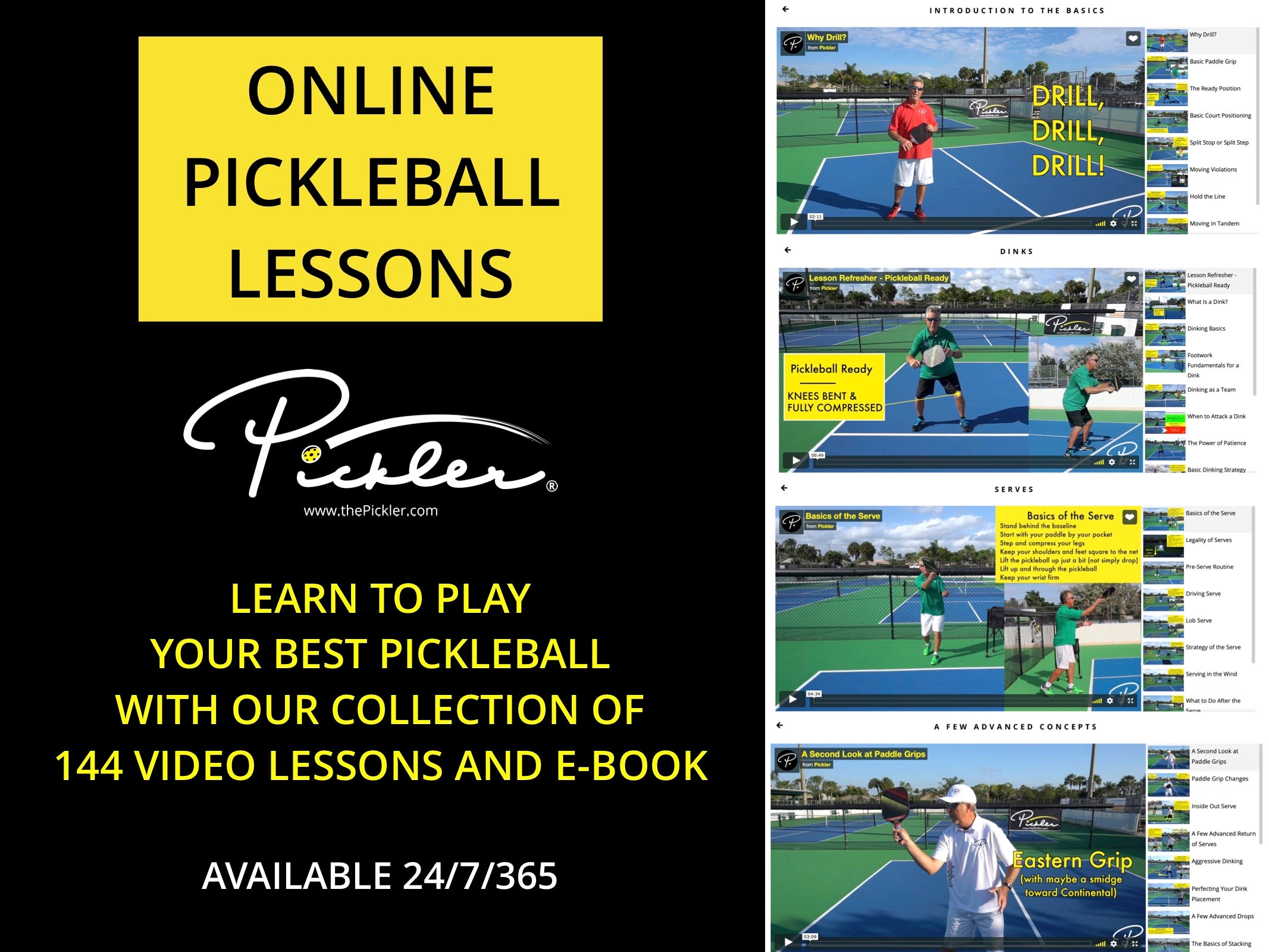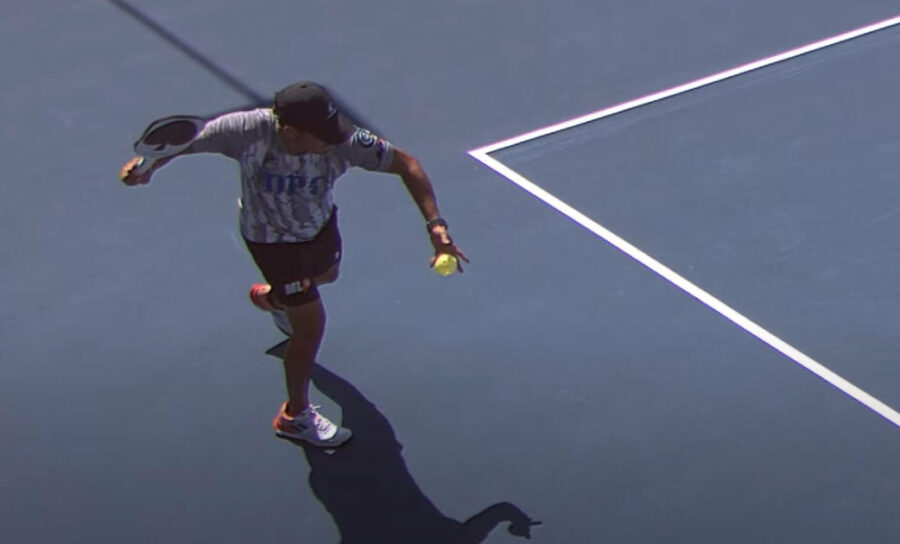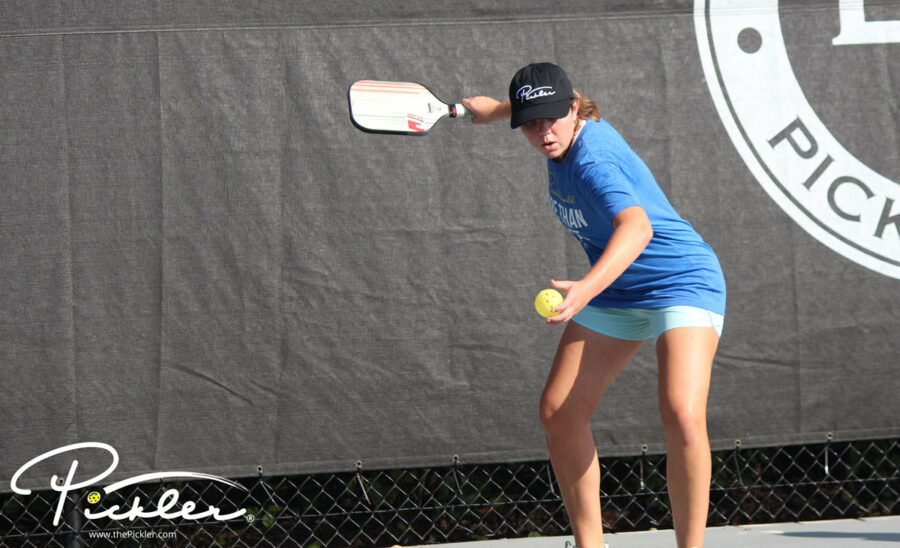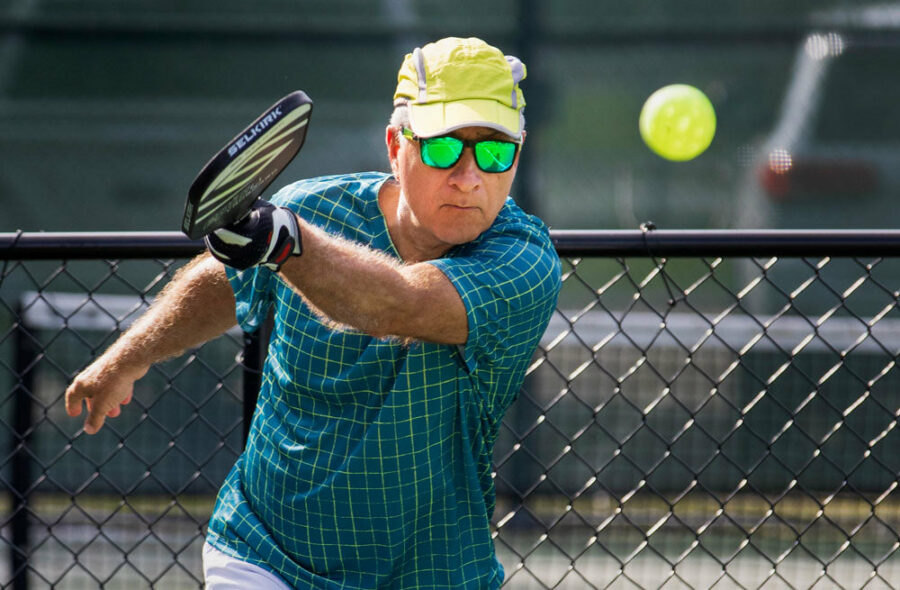The goal of the return of serve in pickleball is to make your opponents’ third shot as difficult as possible. Generally speaking, this means hitting a return of serve to keep your opponents deep in the court and targeting the weaker side (typically, backhands) of the opponent that has a weaker third shot. However, there are other pickleball strategies to consider—particularly, if your opponents are able to hit an aggressive serve to turn the tables and make your return of serve as difficult as possible.
One such strategy for the return of serve in pickleball is to hit your return of serve with slice. Slice—whether a forehand slice or backhand slice—will generate backspin on the pickleball. In other words, the pickleball will have spin that travels from 6 o’clock to 12 o’clock back toward the player that makes contact with the ball.
A slice return can be favorable on the pickleball court for the following reasons:
- Backspin will typically cause the pickleball to take longer to travel in the air (as opposed to a flat return, which would travel at a faster pace). This means that you will have more time to get to the Kitchen line and regain court position (especially if your opponents hit a strong serve that pushed you deep into the court).
- A slice will usually stay low to the ground after the bounce. This is key in preventing your opponents from going on the attack and hitting an easy third shot drive. As a result, a low slice would encourage your opponents to hit a drop (rather than a drive) on the third shot, which can be a good thing if you are facing very aggressive opponents.
- The spin on the pickleball can create problems for your opponents when hitting their third shot, as the pickleball could slide or skip upon contact.
However, the risk of a slice return is that the backspin has a tendency to cause the pickleball to lift or rise a little in the air. As a result, the slice return may float in the air, which could lead to a return of serve that sails out of bounds (and an easy point for your opponents).
To hit a slice return of serve, you will generally strike the pickleball in the same manner as your basic drive (including the same preparation with a short backswing and a contact point out in front of your body), with the following exceptions:
- Paddle Trajectory – For your basic flat drive (with no spin), you generally are trying to keep your paddle head down by your waist and on a level plane through your shot. In contrast, for a slice, you will pull your paddle head up by your ear (whether on your paddle side or non-paddle side of your body). This is because, in order to generate the proper backspin on your slice, you will need to travel down and forward through the pickleball on an angle. Be careful not to pull your paddle across your body. Rather, swing your paddle from your ear in a straight line down and forward toward your target.
- Paddle Angle – For your basic flat drive (with no spin), you will have a flat paddle face. In contrast, for your slice, you will have a slightly open paddle face up toward the sky. This open paddle face—in combination with the high-to-low paddle trajectory—will generate your backspin on your slice.
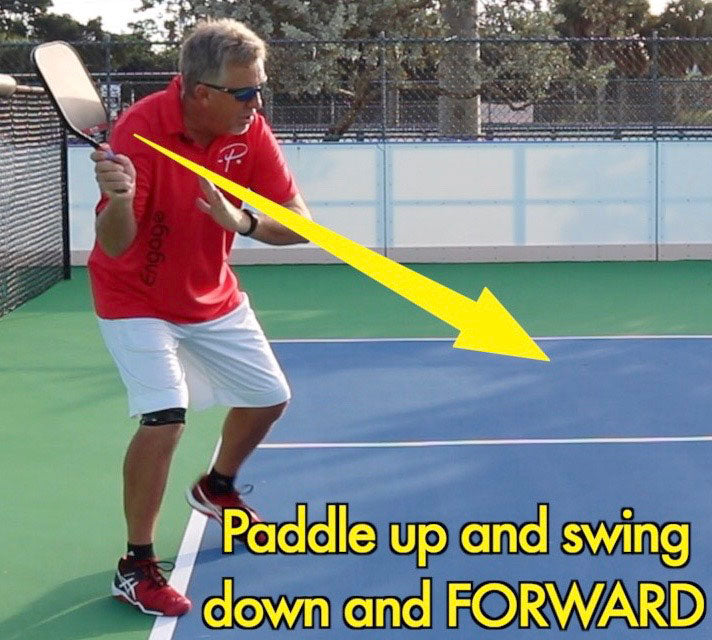
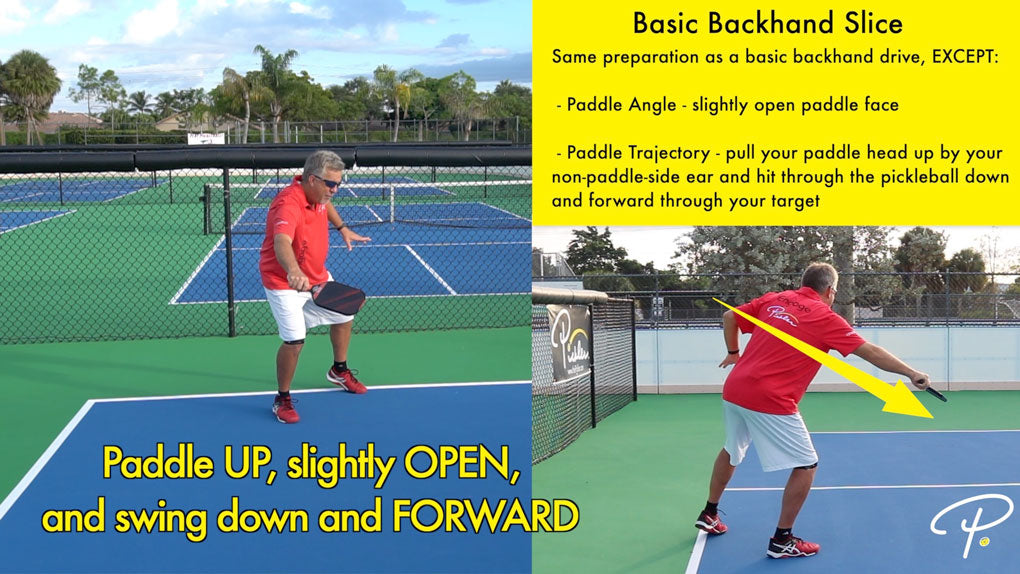
Get out there and work on slicing those returns of serve to make your opponents’ third shot as difficult as possible. Be sure to focus on hitting your slices deep in the court and low to the court surface.
WANT MORE PICKLEBALL TIPS AND STRATEGIES?
Learn 5 common targets to win more pickleball points now!

Plus, if you want more pickleball tips and strategies on every aspect of your pickleball game, check out Pickler’s online video lesson collection called My Pro Pickleball Coach. My Pro Pickleball Coach is a fraction of the price of one clinic or even one lesson, and features over 140 video lessons (over 7 hours of instruction!), as well as a corresponding e-book. These online video lessons are available on demand 24/7 and breakdown every aspect of the sport of pickleball, including pickleball drills, strategy, and advanced concepts, so you will play your best pickleball.

